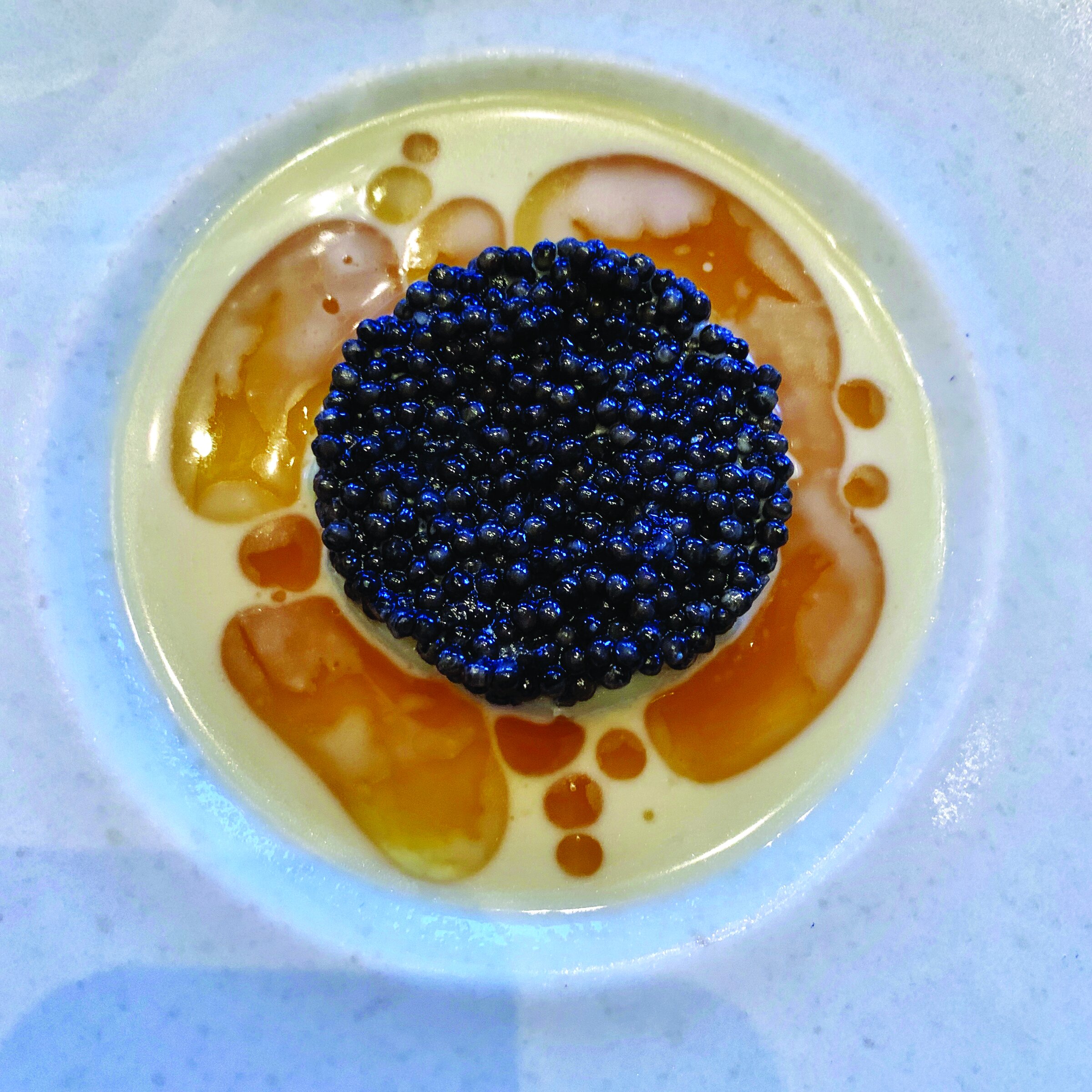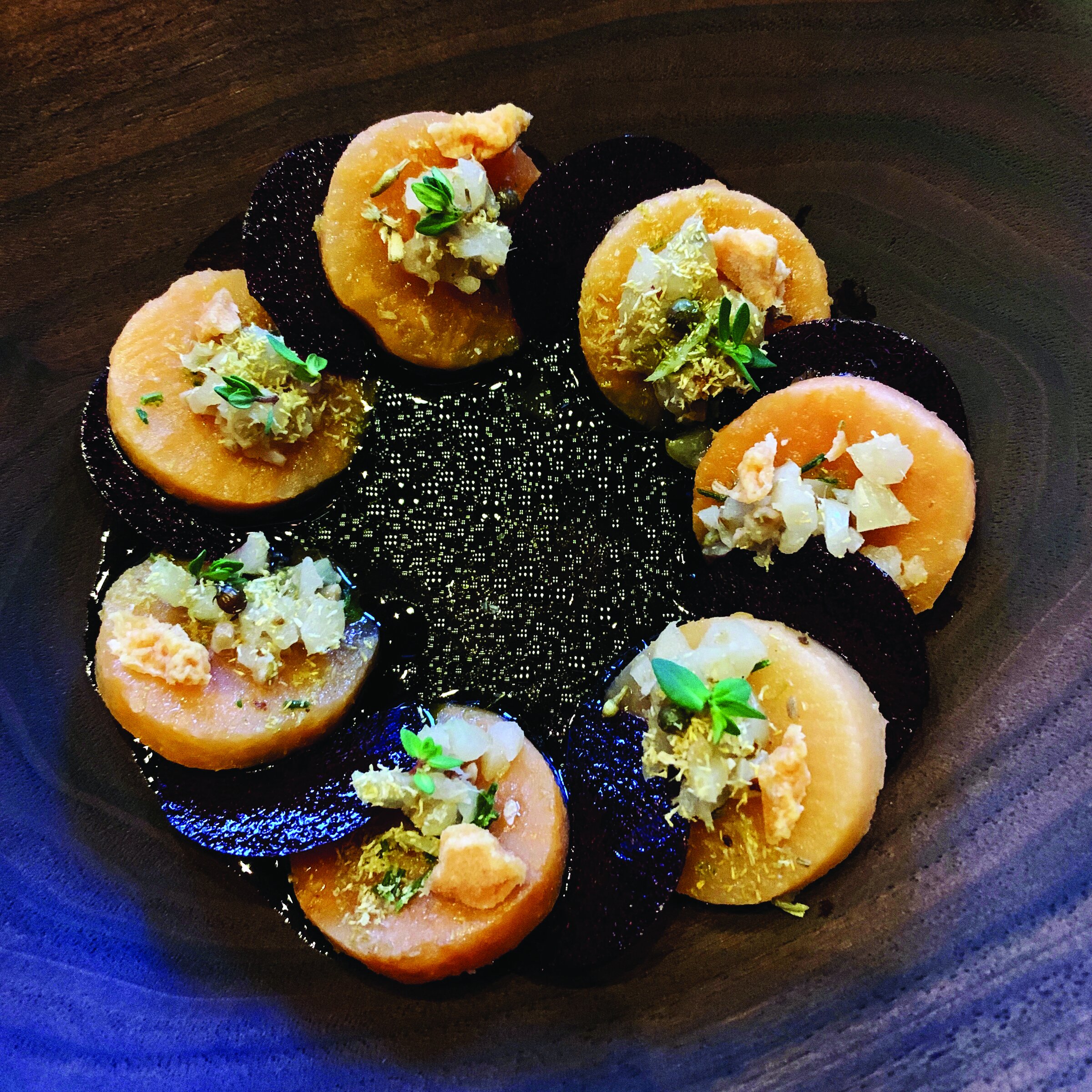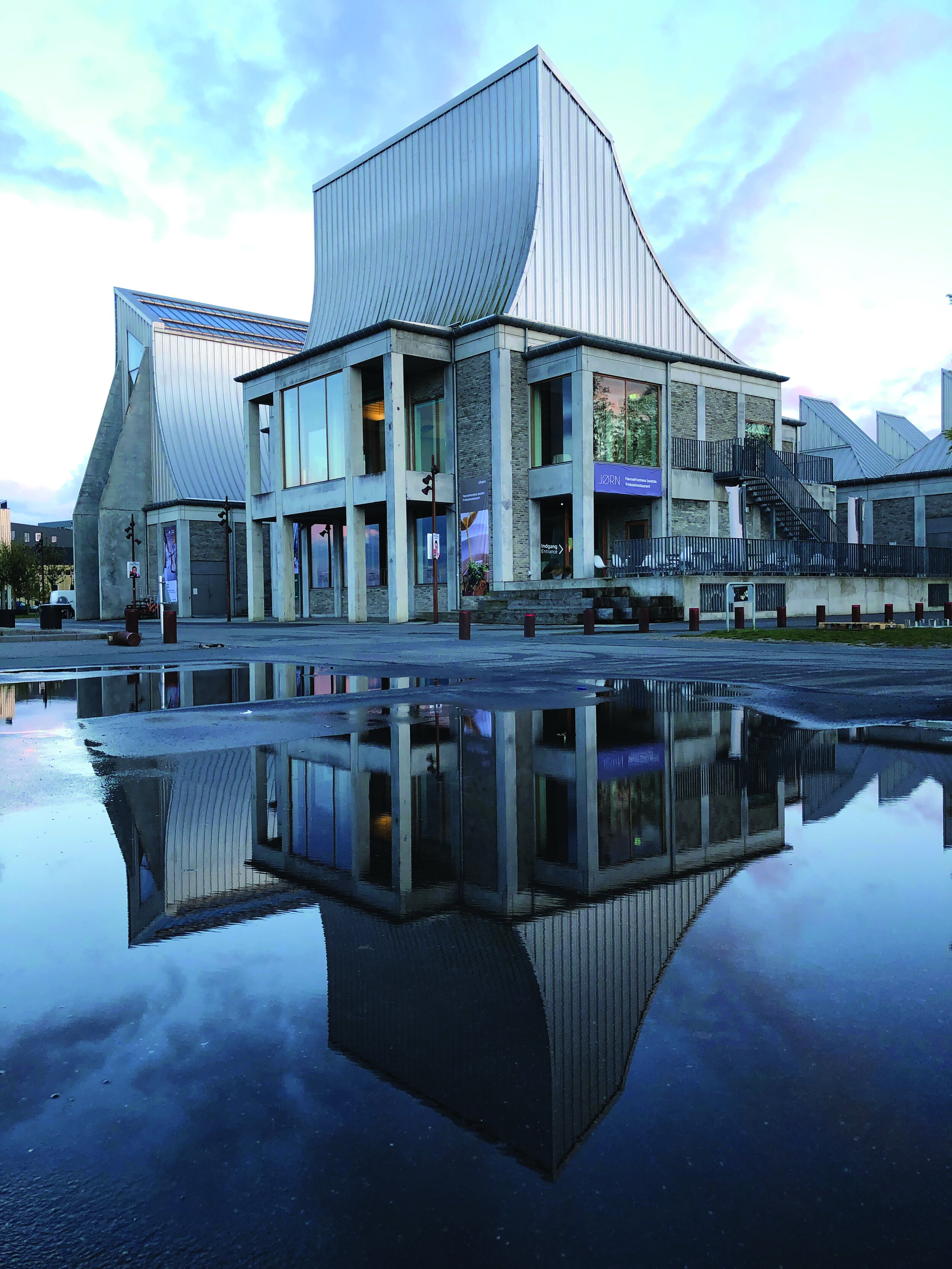Be Charmed by Copenhagen
Denmark – land of the Vikings, now ruled by Michelin-starred chefs of “New Nordic Cuisine.” Home of Copenhagen, frequently rated as one of the happiest places on earth - sorry, Disney! Danes invented their own word for how amazing their lives are – hygge - that feeling of coziness that oozes out of every adorable nook and cranny in the country. Whether you are seeking antique buildings or mod furniture, you will find it in Denmark. This is a place where bicycles outnumber people, where they have all but eliminated waste, and where the entire population is crazy about jumping into the impossibly clean ocean waters that surround this land on all sides, except for the tiny border with Germany, which is all that attaches it to the continent of Europe.
The City
Our first evening in Copenhagen we found our way to Kodbyens Fiskbar, a warehouse-like building in the Meatpacking District. The place was packed shoulder to shoulder with people crammed around the bar and waiting to get in. Not having a reservation, we took our chances on the stand-by list and elbowed our way to the bar for bubbles and oysters – a pairing that we both could happily survive on for the rest of our lives. We started with a snack of Fjordshrimps – tiny little shrimp, flash fried in their shells, served in a paper cone, and eaten whole…shells, heads, antennae, legs and all. Each was about the size of a kernel of popcorn and, once you got past the sensation of eating bugs, was delicious. But oysters were our mission! They offered up six varieties, four from France and two from Denmark. The best oysters in the world come from France, and the Fines de Romegous from Marennes were spectacular, but, this isn’t a story about France, is it?! The two varieties from Demark were distinctive in their own ways. The Gigas oyster is invasive in the waters of Limfjorden; consequently, we are encouraged to eat them and eat them often. And they are very good! The wild oysters from the same waters are in fact the last original wild oysters in Europe and they taste…well, they taste a bit like an aquarium smells! When we finally got called to a table, we both opted for the six-course wine dinner that included scallops with crunchy pork; halibut poached in seaweed with oyster emulsion and Brussels sprouts; hake with green asparagus, horseradish, cucumber and Spanish chervil; marinated rhubarb with rhubarb sorbet, and sesame miso cake and Woodruff oil. Kodbyens Fiskbar was an unplanned splurge, but turned out to be one of our favorite meals in Denmark.
When in Copenhagen, one must partake of “New Nordic Cuisine”. If you visited Demark twenty years ago, you needed an appetite for traditional seafood, because shrimp and fish dominated the menu. However, fifteen years ago a little restaurant called Noma skyrocketed Danish cuisine from dried-fish obscurity to smoked-pine-infused cod over a bed of hand-picked asparagus stardom. The new Nordic cuisine makes the very most of what the land and sea – seafood still tops the food chain - has to offer, and best of all, it is sustainable. Sustainability, ingenuity, perseverance, and daring define New Nordic Cuisine. Noma is now the best restaurant in the world; we could not get in. We did make it to their little sister, 108, but it took some planning and research. Reservations are open at 108 two months in advance, and we were astute enough to get them that much in advance.
Purveyors of New Nordic Cuisine forage for the ingredients of their seasonal menus in the woods, fields, and beaches in close proximity to where the food is prepared. Noma and 108 are the foraging pioneers of the cuisine and they are expert at creating stunning dishes out of even the most obscure finds. Our eight-course journey through springtime in Copenhagen included steamed egg yolk potatoes with Belgian caviar, rutabaga and gooseberry salad, sturgeon three ways (including the spinal cord), a mousse of quail heart and kidney (for the most adventurous of eaters only!) followed by the whole quail lacquered like a Peking Duck accompanied by leeks served in an aged cheese sauce that we could have guzzled straight from a vat.
If Denmark were known for only two things, they would be its New Nordic Cuisine and its outrageous knack for design, for it is home of Finn Juhl (architect and furniture designer) and Poul Henningsen (architect turned-lighting-designer) and so many other top designers. A trip to Copenhagen must include a visit to the Design Museum Denmark. Do not let the antique exterior of the museum fool you: once inside, it is like walking through a mid-century modern fun house. Of everything in the extensive permanent collection, The Danish Chair: An International Affair is clearly the stand-out. Through a brilliantly displayed tunnel of chairs, visitors learn how Danish design became a world-wide phenomenon due to what we rest our derrieres on. Entering the exhibit feels a bit like entering a space station – the octagon tunnel features three levels of chairs on each wall arching over the passageway.
Beyond the City
Copenhagen will almost certainly be your landing spot for a visit to Denmark, but do yourself a favor, get out of the city! Denmark is incredibly easy to drive in and if you happen to visit in early May, you will be treated to endless fields of rapeseed (canola) blooms, which can only be describe as the glowing yellow rival to the lavender fields of southern France in the summer. Yes, we did find a quiet country road where we could satisfy our photographers’ need to capture the sight, but we were respectful of the bees, which were everywhere, and confined ourselves in the car as we continued to be amazed with the landscape.
Just north of Copenhagen is another highlight for the culture-conscious traveler: The Louisiana Museum is a must for modern and contemporary art lovers. The museum is accessible without a car, but if you take the train you will miss a lovely coastal drive. We drove past the famous Arne Jacobsen (yet another Danish architect and designer) service station to a lovely brunch at a roadside café. The museum sits perched on a hill overlooking the ocean and is housed in a vast property that is a mix of antique and modern design. Visitors can experience art from Monet to Ai Weiwei. The Giacometti gallery overlooking the pond is a clear favorite, and the surrounding grounds boast an impressive sculpture collection with the likes of Alexander Calder and Richard Serra. Perhaps it is the location itself, though, that is the star here – one can gaze out on the endless sea.
Our first stop outside of Copenhagen was clear across the regions of Zealand, Funen, and Southern Jutland until we reached the oldest town in the country, Ribe. Pronounced a soft “reee-bay,” (explains why no one knew where we were going when we told them) is a town first established in the 9th century. It is quiet, romantic, and so far removed from the over tourism of Copenhagen that we felt almost like intruders on some local Danish secret weekend get-away. There is a canal that runs through town, snaking its way twenty miles or so inland from the western seashore, complete with water wheels, swans, and a perfectly placed rowboat anchored under a willow tree.
Once you get out of the larger cities in Denmark, you leave the New Nordic Cuisine behind for more traditional Scandinavian fair – meat, potatoes, and seafood, and boy, does this country love their shrimp salad on white bread! For dinner in Ribe, we tried two local traditional establishments – Kolvig and Weis Stu – housed in charming, historic buildings, and both, surprisingly, with a wait list – where did these people come from?? The food was hearty, filling almost to the point of discomfort, and thank goodness we had a sweet little town with quaint street to walk off our dinners.
From Ribe, we headed north. While the town of Skagen (pronounced like a skein of yarn) is easily reached by train, if you drive you can stop in the seaside town of Saeby: a sleepy, little swath of a place, with what has to be the world’s best-kept secret in seafood buffets. We lucked onto this treasure-trove of shellfish by randomly picking a second-story local establishment called Jacob’s Fiskerestaurant. Although fluent enough in Danish to know that fiske means seafood, we were unprepared for the bounty that lay before us. We started modestly with a nice bottle of Gruner and a little sample of everything – smoked, steamed, salad, and raw – but by our second hour, we were on to pints of Carlsberg and making trip after trip to the buffet for the langoustines and crab claws. It is fair to say that we outstayed our welcome and the buffet lost money on us. Amid the disapproving, sideways glances from Jacob’s staff, we hit the road for Skagen.
The main reason for the trek to Skagen was to experience Grenen, the northern-most tip of Denmark. At the peninsula of sand that stretches into the ocean, you are able to stand between two seas - The Kattegat and the Skagerrak - whose currents and temperatures collide, resulting in a visual divide of waters. Quite a sight, it is best experienced from about a half mile away, standing on dunes dotted with WWII German bunkers.
Our day in the North was windy, like wind we don’t even experience in Oklahoma: sustained 60 mph, unrelenting, and brutal. From Grenen, we were off to find Rubjerg Knude – the lighthouse that is doomed to a watery demise in mere years. It was built on Lonstrup Klint, one of the highest points in Northern Denmark. The massive dune is rapidly (in geological terms) creeping inland. Our visit was like walking through the Sahara during a great haboob. Every bit of skin had to be covered or risk being sandblasted by the winds and swirling sands. Although the hike up the dune is less than a mile, the wind and sand made it feat of strength, though we could easily rest by leaning into the wind. The lighthouse itself can be seen from quite a distance, perched on the sands in the most dramatic fashion. The coastline is eroding at a rate of five feet per year and Rubjerg Knude’s crash into the ocean is somewhere between four and six years away. Note: we recently (post trip) learned that the Danish government is making plans to move/save the lighthouse before it is undercut by the winds and sand.
The ocean, the wind, freak hail storms in near-freezing spring-time weather make Denmark a place that has borne truly hearty peoples throughout time. Vikings to designers, ancient Scandinavian hunters to contemporary new Nordic foragers, Denmark is…wild…and in all ways seems to have made its inhabitants blissfully happy – except Hamlet, of course!
photos: JD Merryweather








